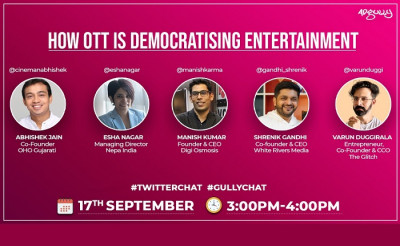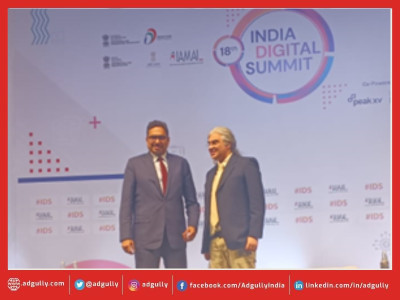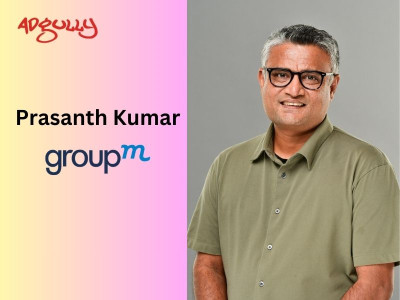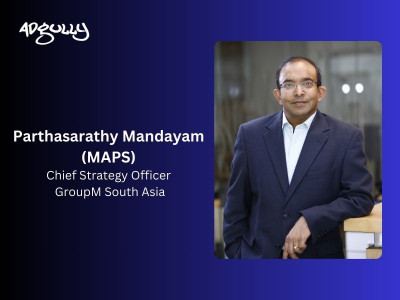With OTT, Indian entertainment has achieved true democracy: Experts
OTT platforms have been changing the content consumption game, more so during the long months of lockdown. Affordable smartphones, high speed Internet connectivity, and reduced data costs have all contributed to the popularity of the Over the Top (OTT) platforms.
And OTT platforms have risen to the occasion – bringing newer storytelling formats, global content as well as increasing the Indian content basket, serving as movie theatres on premiere day and introducing Indians to the amazing stories from different corners of the country with fantastic regional content bouquets.
OTT has also given voice and a platform to very talented, but often underutilised talent from the film and television industry. It has also attracted several Bollywood A-listers and helped create an even more intimate connect between the stars and their fans.
SCREENXX Awards 2021 - Digital Video Content and OTT Platform, Last Date for nomination extended - Thursday, September 23, 2021 - ENTRIES OPEN
According to Ormax Media’s report, the Indian OTT audience universe is currently at 353.2 million (or 35.32 crore) people. This translates into a penetration of 25.3%, which means that one in four Indians have watched online videos at least once in the last one month.
The report also reveals that there are currently 96 million active paid OTT subscriptions in India, across 40.7 million paying (SVOD) audiences, that is, an average of 2.4 subscriptions per paying audience member. 66% of these paid subscriptions are with male audience. The top 6 metros contribute only 11% to India’s OTT universe, but 35% to total paid subscriptions in India.
Adgully’s premier property – #GullyChat – on September 17, 2021, explored ‘How OTT is democratising entertainment’. The panel was joined by:
Abhishek Jain, Co-Founder, OHO Gujarati
Esha Nagar, Managing Director, Nepa India
Manish Kumar, Founder & CEO, Digi Osmosis
Shrenik Gandhi, Co-founder and CEO, White Rivers Media
Varun Duggirala, Entrepreneur, Co-Founder & CCO, The Glitch
In what ways is OTT ushering in a new wave in the Indian entertainment landscape?
White River Media’s Shrenik Gandhi noted, “OTT’s limitless distribution and expanded viewing destinations have given Indian Entertainment, and with that its actors, a newfound global recognition. Case in point, ‘Delhi Crimes’ win and several noted nominations at International Emmys 21.”
He further said, “With OTT, Indian Entertainment has achieved true democracy. The Power to Popularise rests with a diverse global audience. There’s a war for eyeballs, but everyone’s winning! Movies are now easily accessible at one click and as affordable as a cup of coffee.”
According to Esha Nagar, “OTT is consumerising entertainment across cohorts, while building a fresh relevance for the immersive viewer, disrupting ways of content creation and giving leverage parity to talent as well.”
Varun Duggirala felt that OTTs have brought balance to the content mix for consumers. “Niche is as important as Mass/ General audience content. That, along with the ability for the consumer to drive how and when they watch, has changed consumer behaviour forever,” he added.
“By making content created from different parts of the world easily accessible in the preferred language of the locals, OTT platforms are giving viewers access to different types of content and thereby, catering to different tastes of their audiences,” remarked Digi Osmosis’ Manish Kumar.
How have ushering in newer narratives and experimentation put OTT players at the top of the content game?
According to Gandhi, “Everyone has a story to tell. For small independent filmmakers, OTT became a chance to do it unapologetically! It’s an ever more evolving audience, and their thirst for original content has given both subtle and edgy content a loving and more accepting home.”
“Insightful portrayal of South Asian culture by newer filmmakers gave OTT fresh, engaging content over the stale thrills of mass entertainers. Interactive Entertainment has been another ‘game’ changer that engages while collecting data for OTT,” he added.
Speaking about the building advantage of OTT platforms, Duggirala noted, “Flexibility in content models (series/ movies), delivery (binge/ weekly) and interactive options along with razor focussed and broad based content for audiences delivered simultaneously becomes massive as an advantage for OTTs in narrative building.”
Kumar added here, “OTT platforms have given a chance to fresher and newer storytellers and storytelling formats, thereby exposing viewers to a larger content spectrum. By targeting different audience sets with their preferred genre and type of content OTT players have upped their content game.”
With movie halls shut during the lockdown, OTT became the alternate platform to release films. Will OTT continue to remain to be as relevant for the film industry as India returns to normalcy?
Duggirala opined, “There will always be an audience for both theatres and OTT. The delivery window will, however, change the basis of the content. It will allow content that works better on OTT to take the direct route while enabling the blockbusters to take advantage of both mediums.”
Speaking about the OTT platforms’ situation after the industry returns to normalcy, Nagar said, “It is a question of convenience access and experiential access. The two formats will continue to coexist as the relevance and need for the consumer differs. As far as pure storytelling is concerned, OTT is a winner with added affordability in the mix.”
According to Gandhi, “Movie release isn’t a novice concept for OTT. The practice is only new for mainstream films. The cultural shift in content consumption during the lockdown helped makers realise they could eliminate theatre distribution spends and target a niche audience.”
“However, the magic of the silver screen is being missed by those in love with the entire experience. Amid this, a sweet spot revealed itself where the cinema-OTT combination, which emerged out of necessity, will continue to co-exist and flourish too,” he affirmed.
Agreeing with Nagar and Gandhi, Oho Gujarati’s Abhishek Jain remarked, “We must be happy that we are able to give our consumers more options to choose from. Their convenience and their experience come forth as a priority. A big screen is a big screen. Bachchan Bachchan hota hai!”
At the same time he added, “It is wrongly perceived that with movie halls being shut, OTT picked up. It certainly did pick up, but we can look at it this way – it actually surfaced because of the absence of the mainstream. It also made all of us (as makers and consumers) realise that there is a parallel stream which can be explored. So, if movie halls can exist, so can OTT platforms, and any such streams can simultaneously exist.”
“The entertainment medium has always evolved like this, every time a new stream adds up, it only widens the scope of telling more stories or entertaining in a better way,” Jain further said.
Follow the complete conversation on Twitter – @adgully.
















Share
Facebook
YouTube
Tweet
Twitter
LinkedIn